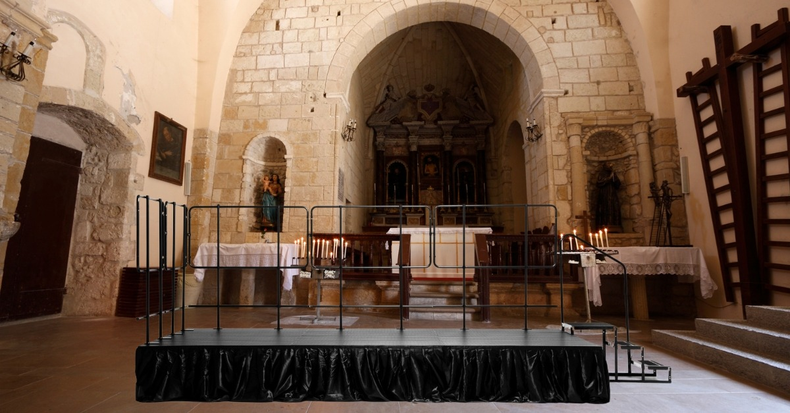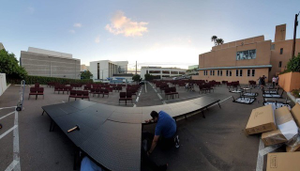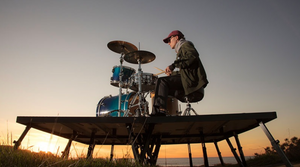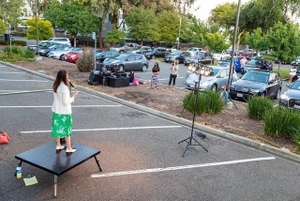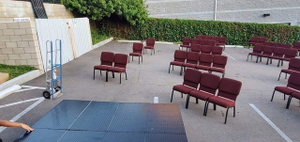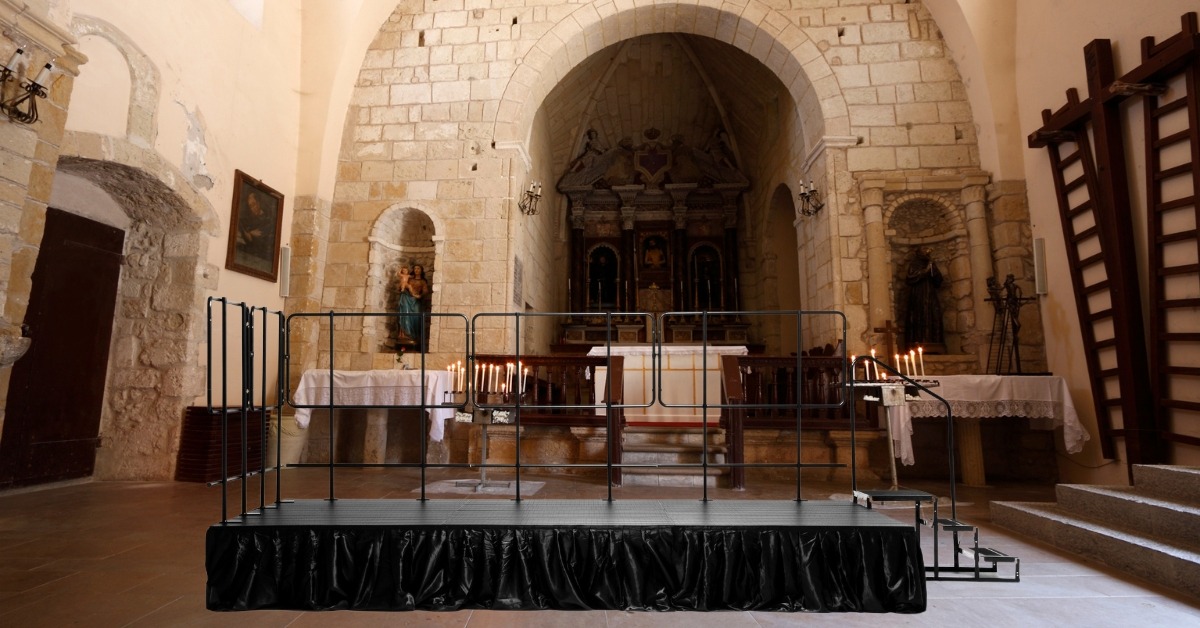
Church services rely on more than just acoustics and lighting. The staging itself plays a defining role in how audiences engage with the message, music, and presentations. A well-designed stage isn't just a platform; it's a dynamic part of the worship experience. It enhances visibility, improves acoustics, and provides the durability required for weekly use in a faith setting. For churches that regularly host services, community events, or concerts, smart staging solutions allow for remarkable flexibility without compromising on quality or safety.
The most effective designs balance strength with incredible ease of use. That’s why churches are increasingly adopting modular systems that can be customized to fit any space. These aren't just planks of wood; they're engineered solutions that grow with a congregation. Accessories like portable handrails and steps improve safety while maintaining the professional look needed for services that welcome congregations of all ages and sizes.
Key Highlights
- Modular staging adapts to small and large sanctuaries, providing ultimate flexibility.
- Portable safety accessories ensure long-term usability and reduce liability risks.
- Proper stage planning enhances both the worship experience and the practical functionality of a space.
- Ease of assembly with tool-free setup makes it practical for volunteer teams.
- Compact storage allows churches to maximize their space.
Why Modular Staging Works for Worship
Traditional fixed stages, while stable, can be incredibly limiting. They lock a church into a single configuration, which can be a problem when a space needs to serve multiple functions. In contrast, modular systems empower churches to expand or reconfigure platforms for different services and events. For instance, a small, intimate Sunday service may only require an 8x8 platform for the pastor and a lectern. However, larger events like a Christmas Eve service, a concert, or a community fundraising dinner may need extended platforms to accommodate a full worship band, a choir, or a large speaker setup.
This is where modular platforms truly shine. They're designed for tool-free setup and breakdown, making it practical for volunteer teams to handle assembly without needing technical expertise. This adaptability makes them especially attractive to churches that host a variety of activities throughout the week, from regular worship services to youth group gatherings, community events, and even weddings. The same system can be a simple altar platform one day and a full-scale concert stage the next.
Design Considerations for Church Stages
When planning a church stage, size is only one factor to consider. Acoustics, safety, and aesthetics are just as important. A stage needs to be more than a solid surface; it must be a part of the sanctuary's design. Features like angled legs with center supports are critical because they prevent wobbling and ensure stability when multiple people are moving on stage, whether it's a pastor walking to the lectern or a worship team in full motion. Surfaces with textured finishes improve grip, which is crucial for musicians, speakers, and especially children participating in performances.
Churches also value clean presentation. A stage that looks well-integrated and professional elevates the entire worship experience. Skirting is a simple but highly effective accessory that adds polish by concealing the underside of platforms and hiding unsightly cables from instruments and lighting. Rails provide essential security for choir risers and elevated worship bands, defining stage boundaries and preventing accidents. Flexibility in stage height is also key. A low-profile stage can be used for smaller, more intimate spaces, while higher platforms can be used to ensure strong visibility in larger auditoriums. This allows a church to achieve the right scale without overwhelming the space.
Enhancing Safety for Worship Services
Safety is paramount in any public space, but especially in a church where liability is a real concern and the congregation includes people of all ages and mobility levels. Staging solutions need to minimize liability risks while keeping volunteers, performers, and attendees safe. Accessories play a critical role in achieving this. For example, portable steps with railings make it easy for people of all ages—from young children to older members of the congregation—to access the stage securely. This is particularly valuable for children's choirs or during large events where foot traffic increases.
Adding guardrails along risers used by choirs or musicians prevents falls while also clearly defining stage boundaries. Non-slip deck surfaces further reduce accidents, especially in environments where people may be moving quickly during services or events. Together, these thoughtful design elements create a secure environment that supports both the safety and confidence of performers and attendees, allowing everyone to focus on the worship experience without worry.
Balancing Aesthetics and Functionality
While safety is critical, presentation matters just as much in a worship space. A stage that looks clean, professional, and well-integrated into the sanctuary can elevate the entire atmosphere of a service. Accessories like stage skirting or subtle railing designs contribute to a polished appearance without distracting from the worship experience.
Churches often use skirting not just for aesthetics but to hide cables from instruments, lighting, or sound equipment, ensuring a clutter-free visual. This simple addition can transform the look of a stage from a functional platform into a seamless part of the sanctuary’s decor. Modular platforms can also be reconfigured to highlight special events such as holiday productions, baptisms, or weddings, giving the church the flexibility to present services with visual impact. This ability to transform the space for different occasions is a huge benefit, allowing a church to make every special event truly memorable.
Storage and Portability
Another major benefit of modular systems is their ease of storage. Churches rarely have large, dedicated spaces for stage equipment. Modular decks fold compactly, stack neatly, and can fit into storage closets or small storage rooms without difficulty. Each module is light enough for volunteers to move without requiring heavy machinery, which is a massive plus for churches with limited staff and resources.
This portability also allows stages to be moved between spaces. For example, a sanctuary stage can be reassembled in a fellowship hall for a community dinner or moved outdoors for a summer revival. This flexibility maximizes the value of the investment, ensuring the same system serves multiple functions across the church property.
Choosing the Right Size for Your Congregation
Church sizes vary dramatically, from small congregations of 50 members to megachurches with thousands. Fortunately, modular staging allows each congregation to choose the right scale for their needs. Smaller churches may find a simple 4x8 platform sufficient for a pastor and lectern, while larger churches may require extended risers for choirs, full bands, or entire drama productions.
The ability to expand staging as a congregation grows provides long-term value. Instead of committing to a fixed stage that might eventually feel too small, churches can start with a modest platform and add more decks as their needs evolve. This scalability makes modular staging a future-proof investment that serves a church for years to come.
Final Thoughts
Durability, safety, and flexibility are the pillars of effective staging for worship spaces. Churches that adopt modular systems not only gain incredible functionality but also save time and resources with equipment that can be easily managed by volunteers. With accessories like TUV-rated portable stage systems, congregations know they are investing in platforms that meet rigorous safety and engineering standards for long-term reliability.
Smart staging ensures services run smoothly while enhancing the overall worship experience. When stages are safe, versatile, and visually integrated into the sanctuary, they allow congregations to focus fully on the message, the music, and the community.
FAQs
1: How do you pick a stage for church acoustics?
Choose modular platforms with stable, quiet construction and textured surfaces. They minimize vibrations and support better sound distribution in a sanctuary. Avoid hollow or unstable platforms that can create unwanted noise or reverb.
2: What are the most budget-friendly church stages?
Smaller modular platforms are the most budget-friendly option. They allow congregations to start with a simple setup and expand as needed, avoiding large upfront costs. Look for systems that are lightweight and easy to store to save on labor and space.
3: How durable are modular platforms?
High-quality, aluminum-framed decks with integrated supports are designed to handle years of weekly use. With proper storage and accessories, they can outlast traditional wooden stages. Look for systems that come with a warranty and have been tested for weight capacity.
4: Can a modular stage be used outdoors?
Yes, many high-quality modular stages are made with weather-resistant materials and can be used for outdoor events like revivals or summer services. Just be sure to check the manufacturer's specifications to ensure the system is rated for outdoor use.
5: Do modular stages require special maintenance?
Generally, no. Modular stages are designed for low maintenance. Regular cleaning with a damp cloth is usually sufficient. It's also a good idea to periodically check for any loose bolts or parts, but the systems are built for long-term, hassle-free use.
6: Can a modular stage be customized for a specific look?
Absolutely. Modular stages can be customized with various accessories, including different colors of skirting, multiple heights, and even custom logos or graphics on the skirting. This allows a church to match the stage to its sanctuary's aesthetic.
7: How long does it take to set up a modular stage?
Setup time varies depending on the size of the stage, but the main advantage of a modular system is its speed. A small platform can often be set up by two volunteers in under 15 minutes, making it highly efficient for last-minute events or weekly services.

